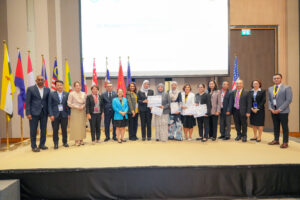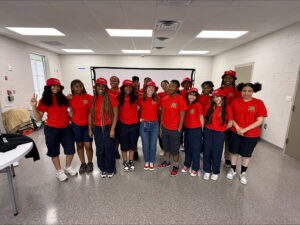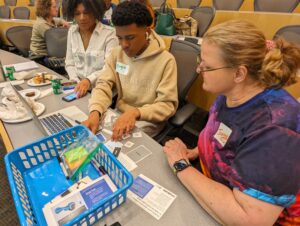Underwriters Laboratories Publishes UL 118F on Fire and Chemical Safety for Residential Upholstered Furniture

ATLANTA – April 20, 2021 – Chemical Insights Research Institute of UL Research Institutes, would like to announce that UL 118F Guidance Document, “Managing Fire and Chemical Exposure Risks of Residential Upholstered Furniture,” has been published and is now available for those seeking to design, specify and purchase furniture with reduced flammability and chemical exposure risks.
The intent of UL 118F is to educate and convey the science for optimizing solutions for reducing both fire hazards and chemical flame retardant exposure risks associated with residential upholstered furniture use in indoor environments. It contains information on fire management processes, the use of flame retardants and other mitigation strategies, available fire test methods for evaluating fire prevention, methodologies for measuring flame retardants, and processes for assessing human exposure risks.
UL 118F was derived from available scientific resources assembled and summarized by a voluntary Furniture Flammability and Human Health (FFHH) Taskforce consisting of representatives from the furniture industry, material suppliers, chemical suppliers, interior designers, fire experts, chemical exposure experts, and public health advocates. The document shares information with designers and consumers on the hazards of residential fires and the human health risks of flame retardant exposure, and then leads them through steps that can be taken to reduce these risks to consumer safety.

“UL 118F will advance the understanding that protection from fire hazards and chemical risks are not mutually exclusive, and it should be an essential safety feature of residential upholstered furniture,” said Phil Piqueira, Vice President of Global Standards at Underwriters Laboratories.
Residential upholstered furniture can be a fuel source when smoldering or open flame combustion occurs, making it a factor in fires and the unintentional death and injury rates associated with residential structure fires. Flame retardants have been used to meet regulations intended to prevent smoldering or ignition or reduce the fire growth after ignition. Due to health concerns and increasing regulations, there is movement among U.S. furniture manufacturers to remove chemical flame retardants from material formulations.

“We are prioritizing education and awareness of furniture flammability and chemical exposure risks among residential interior designers and consumers so they may make safer choices for their clients and families, based on personal choices and health vulnerabilities,” said Dr. Marilyn Black, Vice President and Senior Technical Advisor with Chemical Insights.
Residential upholstered furniture is a significant addition to any interior, with a life expectancy that may extend beyond 20 years. It is estimated that 10-50% of the cost of a home is spent on furniture. This is a significant financial investment for homeowners, and therefore, good selections are essential.
About Chemical Insights
As an Institute of Underwriters Laboratories, Chemical Insights delivers the scientific insights policymakers, healthcare providers, business leaders and consumers depend on to make informed environmental health decisions. Combining the best minds, rigorous scientific research and a commitment for thorough and accurate results, Chemical Insights is improving the health of people and the planet.
Our work lets people around the world know what chemicals are in the air we breathe, the water we drink, and the products we interact with every day. Our research and initiatives give them the knowledge of exactly what those chemicals are, how they may affect human health, and how to manage their impact.
Our leadership role is to provide science or knowledge to implement improved practices, alternative product design, and changes that enable safer products and healthier environments. To learn more, please visit chemicalinsights.org.
About Underwriters Laboratories
Underwriters Laboratories is a nonprofit organization dedicated to advancing the UL public safety mission through the discovery and application of scientific knowledge. We conduct independent research and analyze safety data, convene experts worldwide to address risks, share knowledge through safety education and public outreach initiatives, and develop standards to guide safe commercialization of evolving technologies. We foster communities of safety, form grassroots initiatives for neighborhoods to summits of world leaders. Our organization employs collaborative and scientific approaches with partners and stakeholders to drive innovation and progress toward improving safety, security, and sustainability, ultimately enhancing societal well-being. To learn more, visit UL.org.
Contact
Bert Kelly
Chemical Insights Research Institute
UL Research Institutes
Bert.Kelly@ul.org
PUBLISHED









